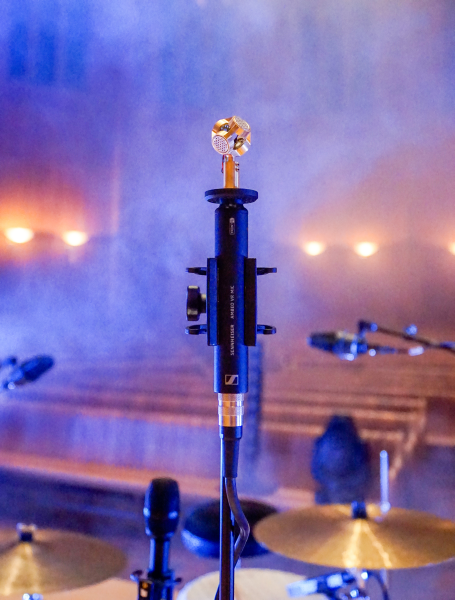“I couldn’t take a routine project. Uncharted territory is where I perform best,” says Veronique Larcher, entrepreneur in residence at Sennheiser, the privately-owned German maker of headphones and microphones.
Larcher also has a more “corporate” title: Director of AMBEO Immersive Audio. But she prefers to use entrepreneur in residence.
At the moment she is working on the Ambeo project, which is designing cutting edge “3D audio” products. This is essentially creating speakers and mics that make sounds appear to be coming from behind you or above you without the need to sprinkle speakers around the room.
Sennheiser makes, for example, a TV soundbar that gives you a full surround sound experience without the need for any other speakers. It was Sennheiser’s first home audio loudspeaker since the 60es and the AMBEO team was key to making it happen.

What is the point of entrepreneurs in residence?
Entrepreneurs in residence have become relatively common over the last decade or so, although they are mostly found at startups, venture capital firms, and universities where their role is usually to help coach would-be founders. There has been a smattering of them at big corporations, though, especially in the early part of the decade, when Ingrid Vandervelt at Dell and Craig Walker at Google gave some prominence to the role.
What does an entrepreneur in residence really do at a corporate, though? Why not just a really good chief innovation officer, or an ace research and development lab?
Contrarian, visionary, lawyer are all words that come up as Larcher describes how her role works in practice. It is something of a guerrilla role — Larcher says working slightly at arm's length from the parent company is beneficial for innovative ideas to grow from a concept to something you can show and test. And it clearly requires a fair amount of grit and self-motivation.
Kindergarten
Larcher started with Sennheiser in 2005, when there was a trend among big corporations to send staff to Silicon Valley to try to learn from and with the startup ecosystem. Larcher established a 7-person research group in California, building links into universities and startups to scout out new ideas for the company.
It wasn’t always taken seriously by everyone at Sennheiser. “There was a sentiment that we were the kindergarten of the company,” says Larcher.
You have to build cases, like being your own lawyer. You influence, you convince. This is the job.
“When you create things that are new they can be seen by some people in the company as untimely,” she adds. “Development teams are solving technical challenges and day-to-day problems of cost and manufacturing and cannot focus on looking that far into the future. Just like in a start-up, nine out of the ten things you create will be thrown away and they see that as a waste.”
“You have a constant struggle to explain what you are doing. You have to build cases, like being your own lawyer and marketeer. You influence, you convince. This is the job,” Larcher says.
Hit factory
Luckily some of the new products that Larcher and her team pioneered became big hits for Sennheiser, helping to establish her internal credibility. One of the products that came from the California lab was the TeamConnect Ceiling, a microphone system suspended from the ceiling of a meeting room which can detect who is speaking and direct the microphone to capture sound more clearly. It is now one of the flagship products for the business communications division.
Larcher also got Sennheiser to start developing audio products for virtual and augmented reality — where getting an immersive sound is especially important. Her first microphone prototype for capturing spatial sound wasn’t pretty, admits Larcher.

“We cut corners. It is a 20-year-old format that we reused. And it just looked like a normal microphone…until you take off the grille. We could have made a really cool new design for it but that would have taken another year,” she says.
Larcher knew it was crucial to get Sennheiser into the rapidly-moving VR space as soon as possible, so the AMBEO team focused on shortening the company’s product development cycle down to 10 months.
Test and test again
In common with other innovators (see 7 Innovation ideas from Lego) Larcher is always keen to start testing a product with real customers as soon as possible, even before it is market ready.
“You don't need to spend the whole three months to create a very polished application. Sometimes you can do something pretty ugly, which I would call throwaway code. That enables you to validate fast whether or not you're on the right track,” she says.
Innovation is not always just creating new things.
It is the same with many of the products she is now developing for AMBEO. “We often make engineers very unhappy because they always strive for perfection. But sometimes we just put two older products together in a new way,” she says. “And that in itself is innovation as well as creating new things.”
The rush into 3D audio might be a good bet though. The technology was a big trend at this year’s CES show in Las Vegas and Sennheiser is pushing it into new fields like cars where the move towards electric vehicles and automated driving is creating new possibilities for in-car entertainment.


